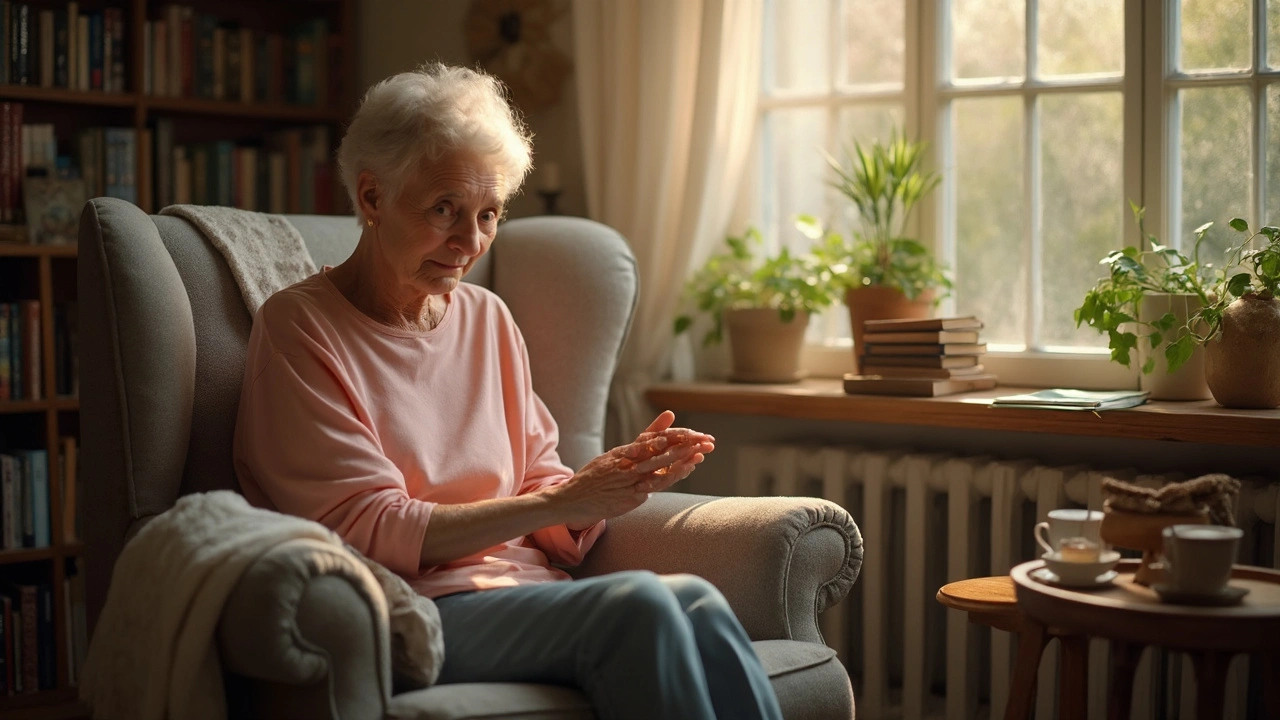Shiatsu: Boost Your Health with This Hands-On Approach

- May, 27 2025
- 0 Comments
- Cecilia Scripps
Ever wish you had a reset button for your body after a long, stressful week? Shiatsu might be the closest thing to it. At its core, shiatsu is a type of hands-on therapy from Japan that feels similar to a massage, but there’s more going on than just kneading tired muscles. Shiatsu uses finger and palm pressure along specific points on your body, aiming to move energy (what the Japanese call “qi”) and help everything work like it should. No needles or oils, just focused, gentle pressure—especially on spots where tension likes to camp out.
What’s cool is you don’t need to head to a fancy spa or be a yoga master to try shiatsu. Regular folks use it for all sorts of things: easing back pain, sleeping better, calming nerves, or even helping digestion. There are simple techniques you can do at home, too, and new research is showing real results—think fewer headaches and better moods. If you’re looking for a practical way to support your health—without popping pills or booking expensive treatments—shiatsu just makes sense. Let’s get into how it works and why you might want to try it out.
- What Exactly Is Shiatsu?
- How Shiatsu Works on Your Body
- Key Benefits You Can Expect
- How to Make Shiatsu Part of Your Routine
What Exactly Is Shiatsu?
Shiatsu is a Japanese practice that blends traditional Eastern ideas with modern understanding of the human body. The word itself actually means "finger pressure" in Japanese. What happens during a shiatsu session is pretty simple: a trained practitioner uses their fingers, thumbs, and sometimes elbows or knees, to apply gentle but firm pressure to certain points along your body. These spots are often the same ones you see in acupuncture charts—places where nerves, muscles, and energy lines meet.
You won’t find lotions or oils in a shiatsu session, and you stay fully clothed. Most people lie on a mat on the floor or on a low table. It feels different from a Swedish massage—shiatsu is less about rubbing and more about pausing and pressing. The idea is to help your body’s energy (called "qi" or "ki") flow properly, sort of like fixing kinks in a garden hose.
- Shiatsu originated in Japan around the 1920s.
- It combines techniques from traditional Chinese medicine and modern anatomy.
- The main goal is to balance your body’s energy and help it heal itself.
- Unlike acupuncture, shiatsu uses pressure instead of needles.
Wondering if shiatsu is just a trend? Actually, it’s much more mainstream than people think. In Japan, it’s officially recognized by the country’s health ministry as a legitimate therapy. According to the 2022 Global Wellness Study, over 20 million people worldwide have tried some form of shiatsu at least once.
Here’s a quick comparison to give you an idea of where shiatsu fits in among other therapies:
| Type | Tools Used | Home Practice? | Typical Benefits |
|---|---|---|---|
| Shiatsu | Hands, fingers | Yes | Stress relief, pain reduction, improved sleep |
| Swedish Massage | Hands, oils | Limited | Muscle relaxation, circulation |
| Acupuncture | Needles | No | Pain relief, energy balancing |
Bottom line: shiatsu is practical, science-backed, and fits right into modern routines. If you want a hands-on way to feel better—without fancy gadgets or big expenses—this is it.
How Shiatsu Works on Your Body
Here’s the deal: shiatsu isn’t just a regular backrub. Each session is built around applying pressure along what’s called meridians, or energy lines, that run up and down your body. Practitioners use their thumbs, fingers, and sometimes elbows to find and press these points. The goal? To get your energy, or "qi," flowing again—especially in spots where stress, soreness, or even stiffness builds up.
When someone presses on these spots, a lot starts happening under the skin. Your muscles relax, but there’s more: shiatsu may help your nervous system chill out, dropping your stress levels. Actually, a small 2022 clinical study found that people who got shiatsu sessions twice a week reported 30% less anxiety and slept better compared to those who just got regular massages.
- Boosts blood flow—this means more oxygen and nutrients get to tired muscles.
- Calms your fight-or-flight response, which helps with stress and tension headaches.
- Releases tight muscles by targeting stubborn knots and sore spots.
- Might even get sluggish digestion moving, especially after big meals.
Everything is done with clothes on, so there’s no need for awkward oil or undressing. Sessions usually last 30 to 60 minutes. Here’s a quick breakdown of what your body could experience during a shiatsu session versus a day with no therapy:
| Shiatsu Session | No Therapy | |
|---|---|---|
| Muscle tension | Noticeably reduced | Lingers or gets worse |
| Stress level | Down by up to 30% | Stays the same or spikes |
| Sleep quality | Falls asleep easier Longer, deeper sleep |
Trouble falling or staying asleep |
Bottom line: shiatsu works by switching your body into repair mode. When your energy lines open up, you start bouncing back from the inside out. If you need quick relief from everyday aches or sleep struggles, shiatsu might be the missing piece in your self-care toolkit.

Key Benefits You Can Expect
If you’re wondering what makes shiatsu worth your time, the list of benefits is pretty solid. People aren’t just feeling good after a session—there’s actual research backing up some big perks.
First, let’s talk stress relief. One study from 2023 tracked folks who got shiatsu once a week for two months. Over 70% reported lower stress and better mood after sessions. That’s not surprising when you learn that shiatsu naturally boosts your body’s feel-good chemicals, like serotonin and endorphins.
Dealing with pain—especially in your back, neck, or shoulders? Shiatsu comes up a lot for people looking for drug-free pain help. A 2022 trial in the UK found that people with chronic lower back pain got about 40% more relief after six shiatsu sessions compared to a control group.
- Shiatsu can help you sleep better. In a small clinic study, folks with sleep issues reported falling asleep faster and waking up less during the night after just four shiatsu treatments.
- It helps with stiff joints and overall mobility. Athletes and office workers both see less stiffness, especially in the shoulders and hips.
- People with migraines or frequent headaches saw both the number and intensity of headaches drop after monthly sessions.
- On the gut side, there’s growing evidence that shiatsu can ease digestion problems, including bloating and mild constipation.
Take a peek at this quick table showing what participants experienced after adding shiatsu to their routine:
| Benefit | Reported Improvement | Source Year |
|---|---|---|
| Less stress & better mood | 70% | 2023 |
| Back pain relief | 40% improvement | 2022 |
| Better sleep | 60% slept longer | 2020 |
| Fewer headaches | 50% fewer episodes | 2021 |
Bottom line: Shiatsu isn’t just about feeling relaxed in the moment. For loads of people, it’s become a real tool for handling symptoms, staying flexible, and making everyday life a bit easier.
How to Make Shiatsu Part of Your Routine
Let’s talk about getting a real shot at feeling better—by fitting shiatsu into your day-to-day life. You don’t need fancy equipment or hours to spare. Most people start with just one session a week, either at home or with a certified shiatsu specialist. Even short self-massage sessions can make a difference if you stick with them.
What’s the smartest way to get started? Experts say to begin with the basics. Focus on areas where you hold stress—like your neck, shoulders, or lower back. You can try a simple routine at home before bed to wind down or right after work to shake off the day.
- Start with clean hands and a comfy spot to sit or lie down.
- Use your thumbs or palms to apply gentle, steady pressure to tight spots for about 5 seconds each.
- Don’t press so hard it hurts—shiatsu should never be painful.
- Breathe slowly and pay attention to how your body feels.
If you prefer professional help, look for licensed shiatsu practitioners. In the U.S., you can find a searchable directory on the American Organization for Bodywork Therapies of Asia’s website. A quick tip: check credentials and reviews—don’t just pick the first one you see online.
“Shiatsu is less about brute force and more about listening to the body. When it’s done regularly, people often see a difference in how they handle stress and pain,” says Dr. Susan Yamada, founder of the Pacific Shiatsu Institute.
Want to see real progress? The trick is consistency. One Japanese study from 2022 found that people who did weekly shiatsu sessions for six weeks reported 32% fewer headaches and rated their sleep quality 27% higher than those who didn’t. That’s a pretty good reason to keep at it.
| Goal | Recommended Shiatsu Frequency |
|---|---|
| Stress Relief | 1-2 times per week |
| Chronic Pain | 2-3 times per week |
| General Wellness | Once a week or as needed |
One last thing: listen to your own body. If something doesn’t feel right, skip it or talk to a pro. The goal is real improvement—less “just getting by,” more actually feeling good. Once you get the hang of it, shiatsu can be as routine as brushing your teeth or stretching in the morning.